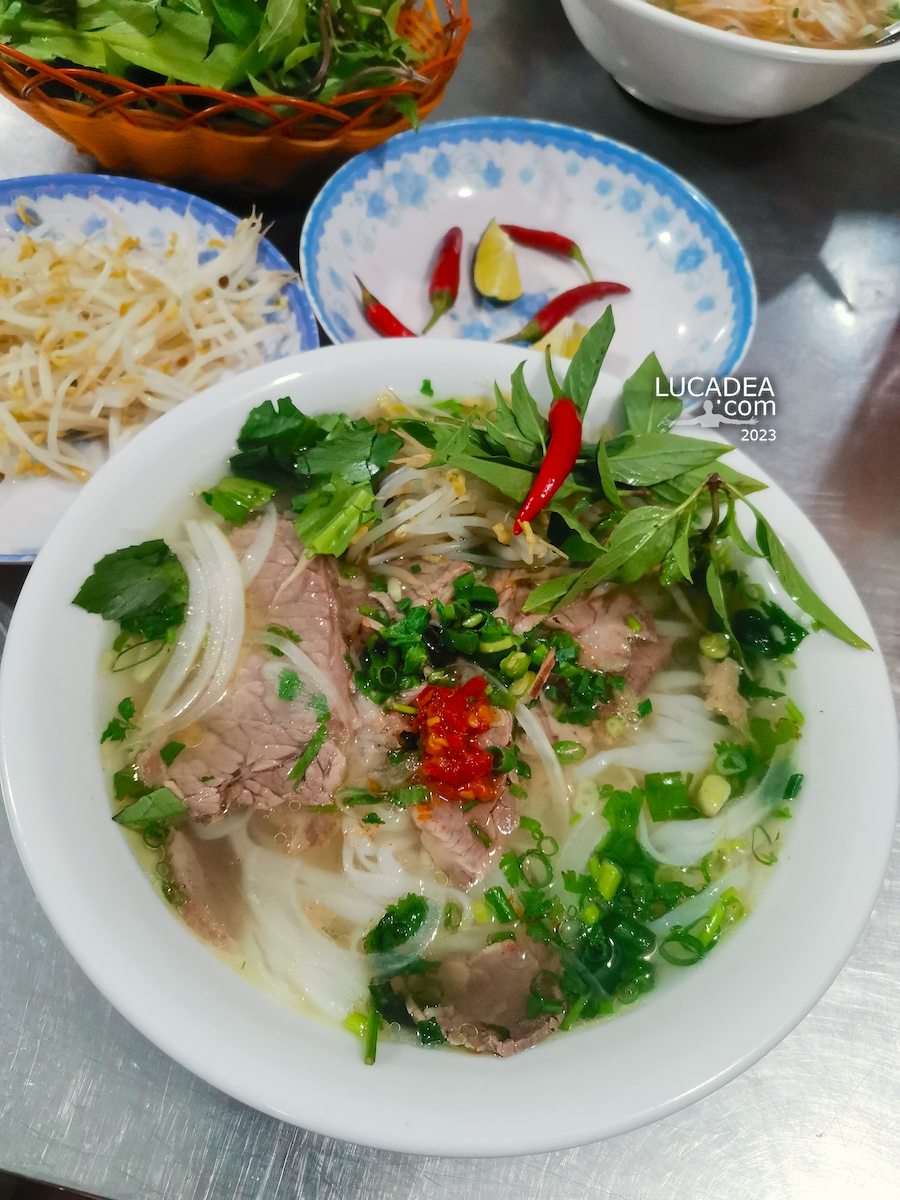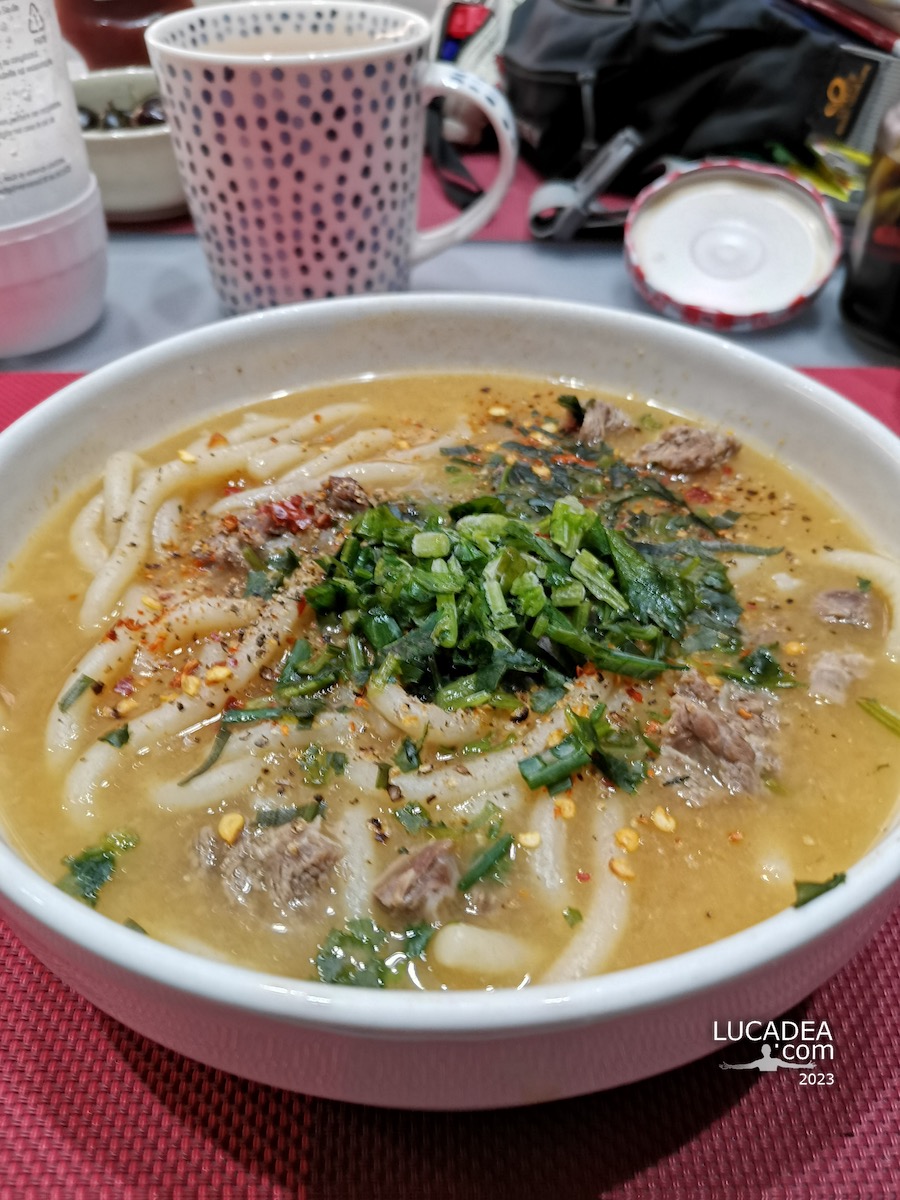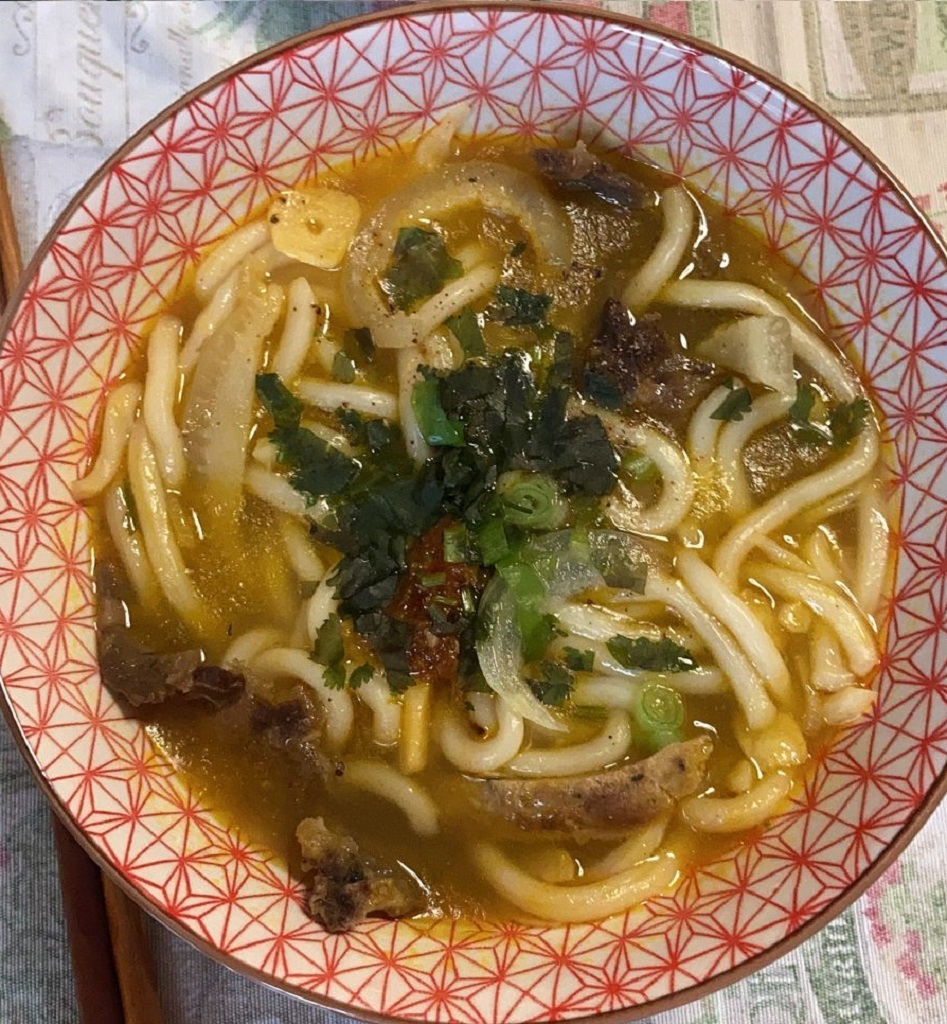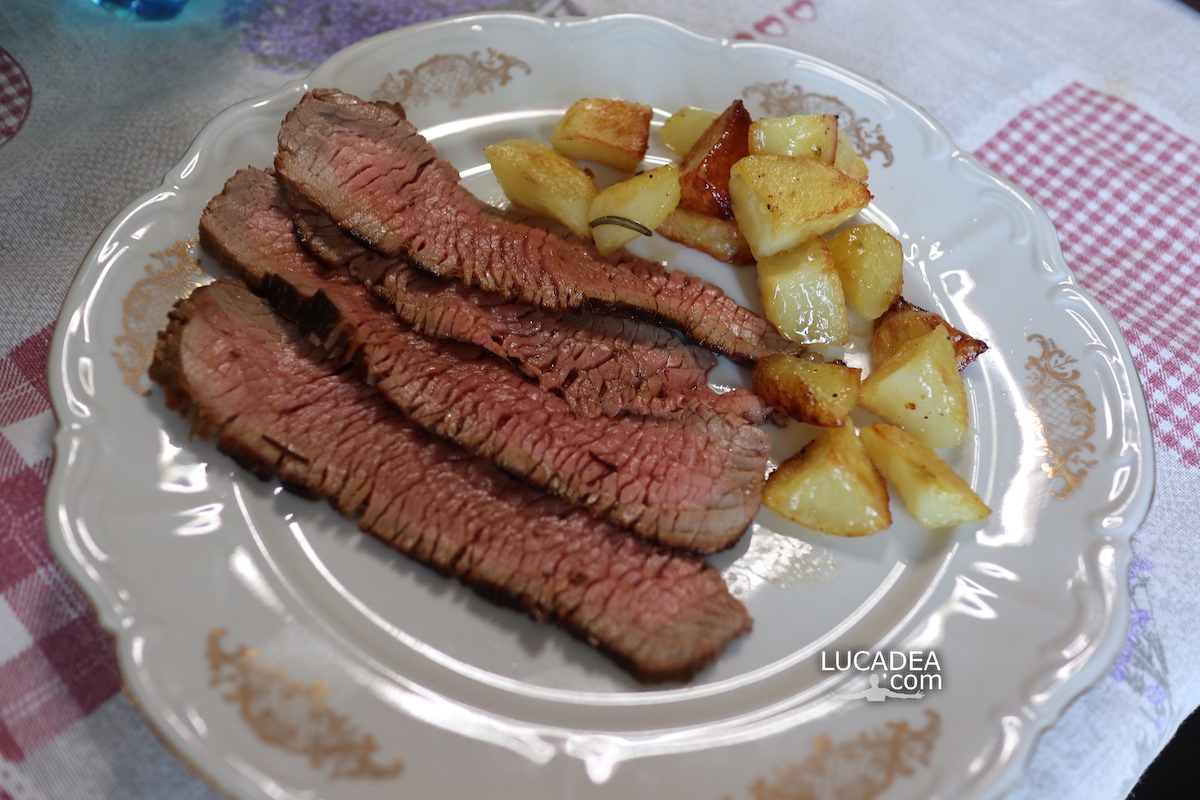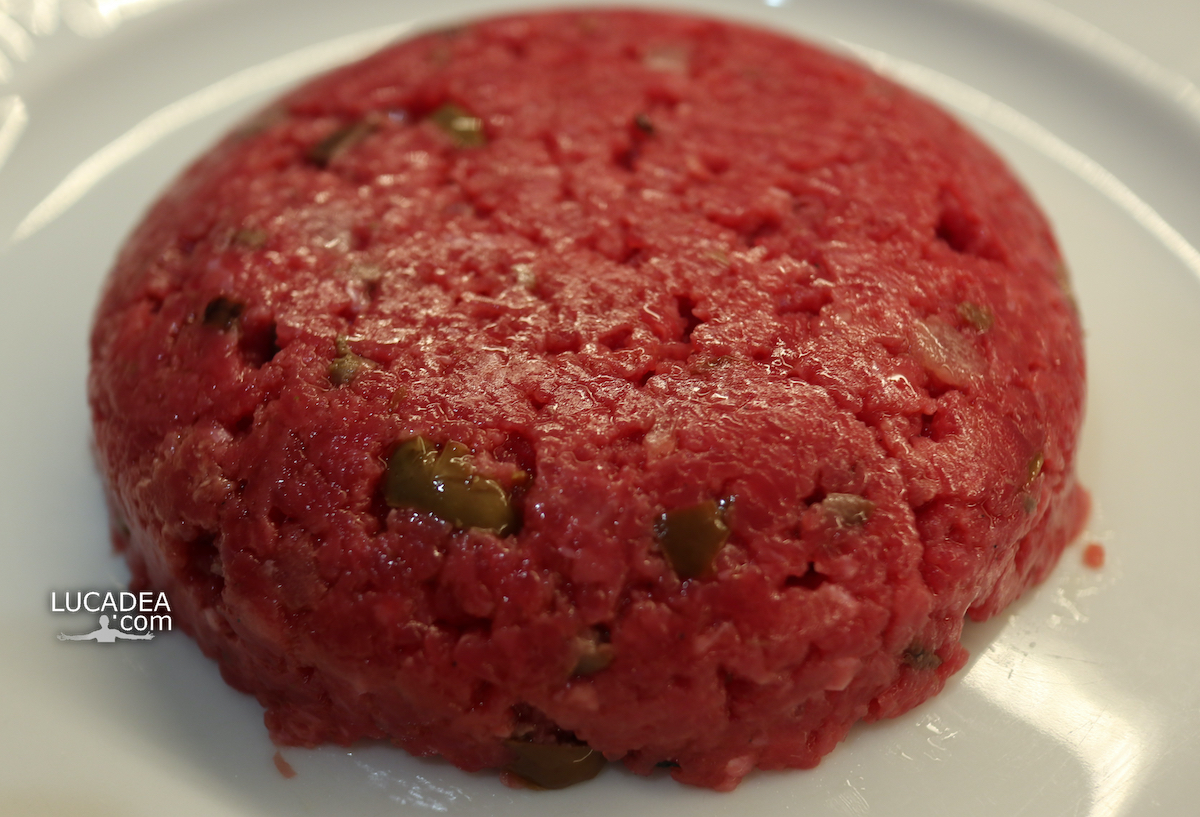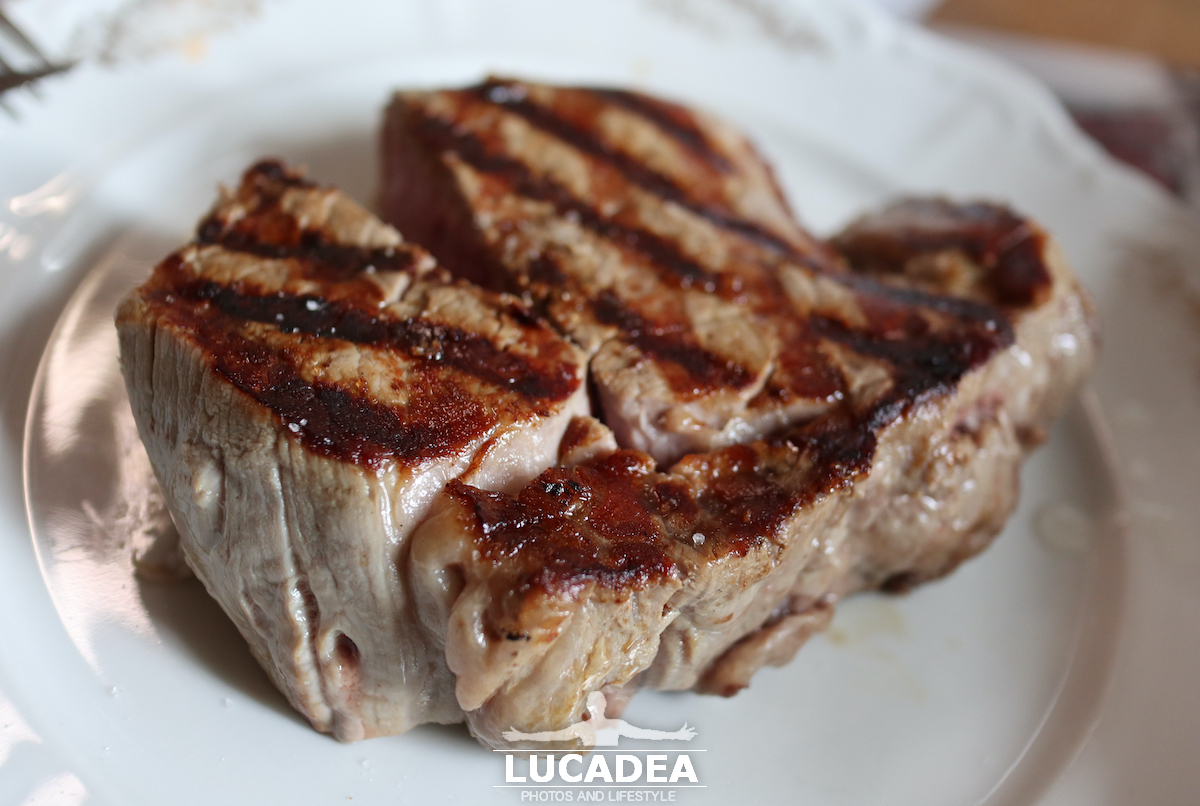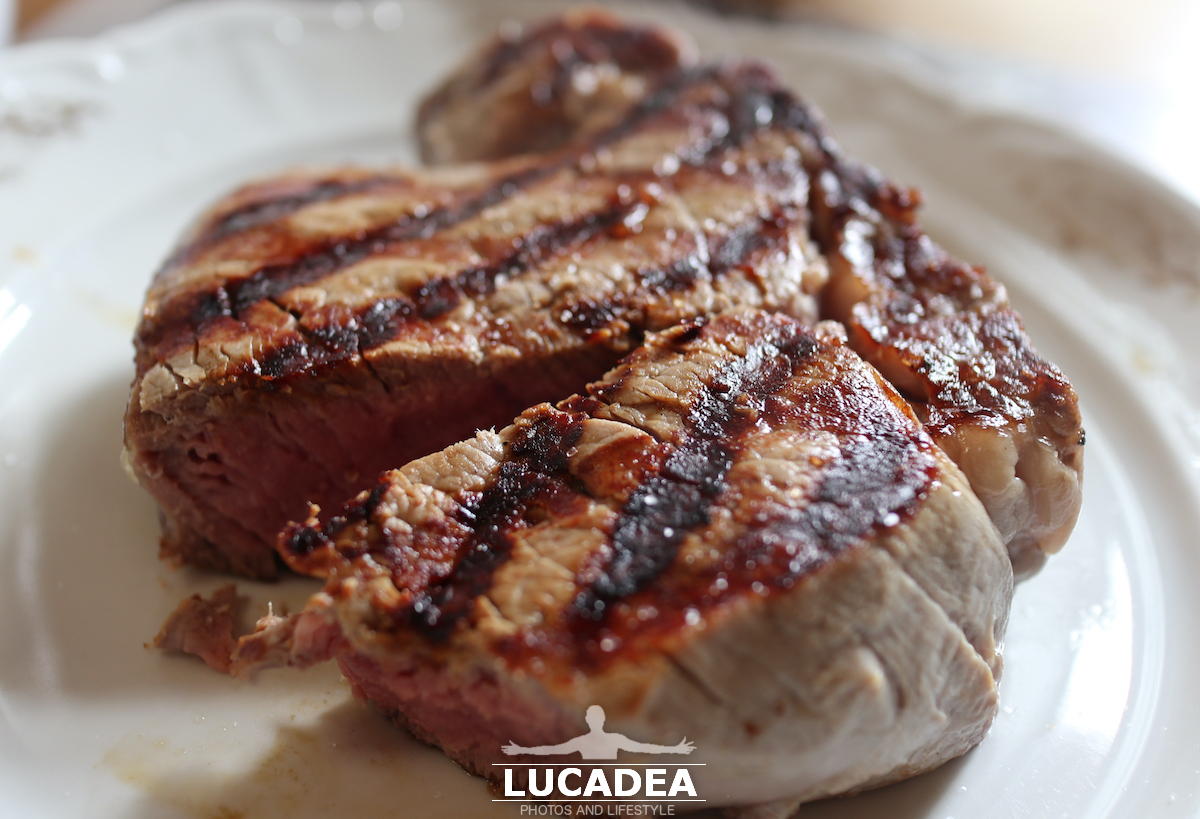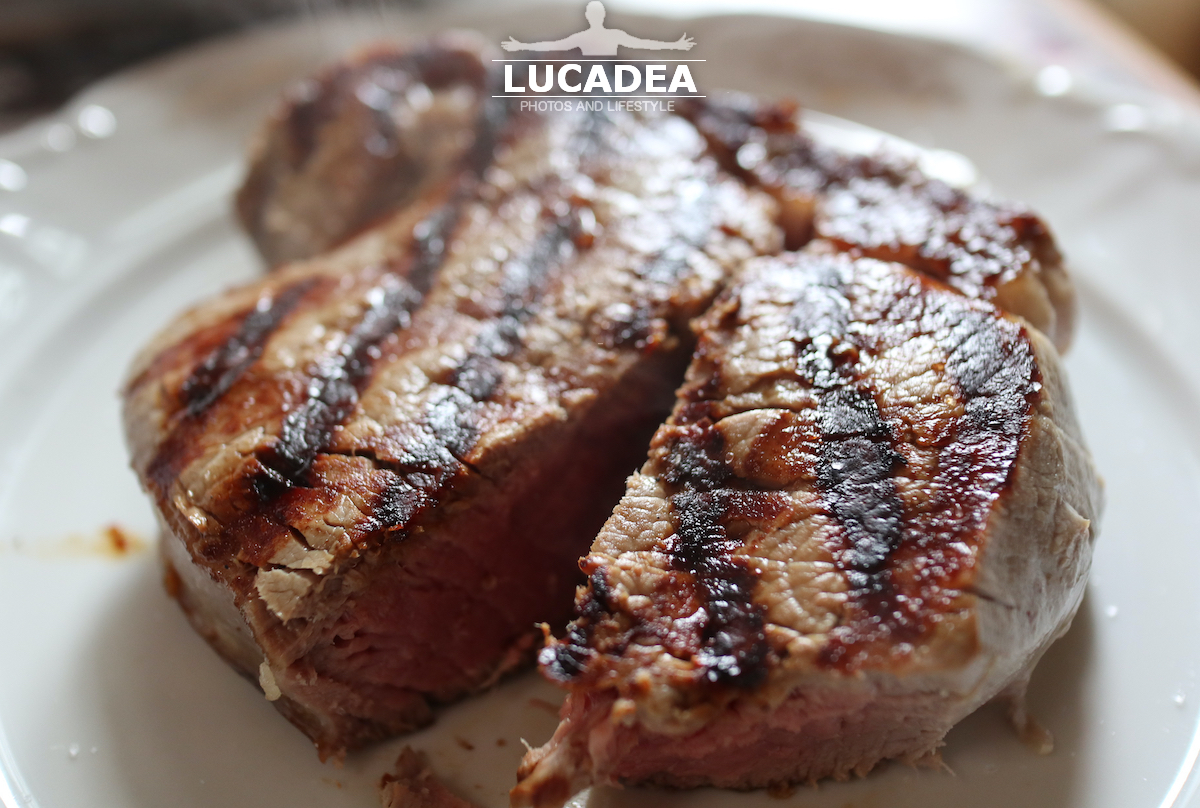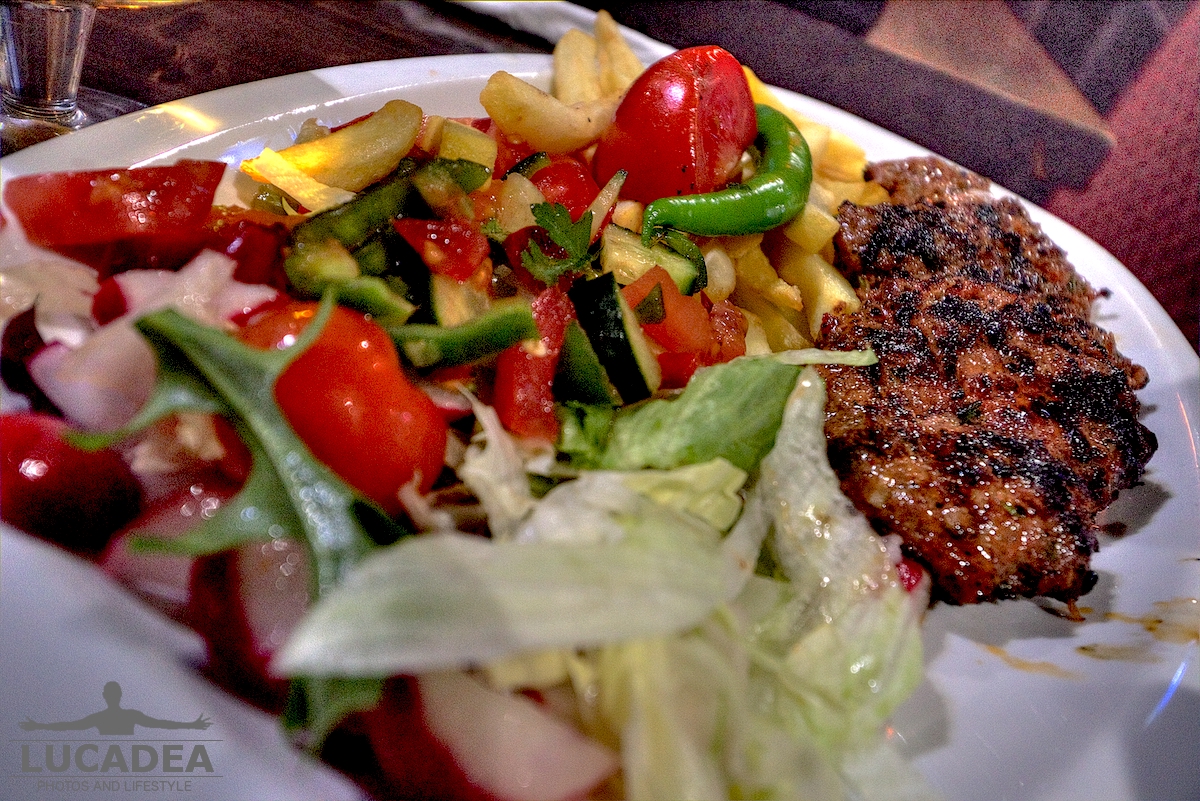Vietnamese cuisine: phở bò, the recipe
When you ask a foreigner what they know about Vietnam, they immediately think of the conical hat or Vietnamese pho. I tried to describe the preparation, which is long and not exactly easy. In Vietnam, it usually costs less to buy it in a take-away (which produces tons of it) than to prepare it at home.
Click vào đây để đọc bằng tiếng việt!
If you are curious about this recipe of mine or Vietnamese food in general, write me a message. comment or go to the bottom of the site to read what other visitors have written.
Pho has long been a traditional and signature dish of Vietnamese cuisine. The main ingredients are rice noodles and broth along with thinly sliced beef or chicken. The most suitable meat for cooking pho is the meat and bones of Vietnamese cattle breeds.
The most important ingredient of the dish is not the beef or noodles, but the broth. Pho broth is made with beef bones, delicious fish sauce, ginger, onions and many dry spices and each place has its own secret to making the typical broth. However, the broth should be sweet, clear, rich and a little fatty.
Ingredients
– Beef shank bones: 3kg, soaked in salted water for 2 hours, then washed and drained;
– Beef shank: 1.5kg used to make beef meatballs, tied tightly for cooking;
– Beef fillet: 1/2kg used as rare beef, washed and thinly sliced;
– 5 dried purple onions, 1 onion, 1 ginger: wash everything to remove the peel, then grill until fragrant, then remove the burnt peel;
– Dried sea worms: 3 (washed and pan-roasted until fragrant);
– 2 star anise flowers, 2 cardamom pods, 1 cinnamon stick, 6-8 cloves, 1 teaspoon coriander seeds, 1 teaspoon star anise: roast everything until fragrant; ...1 teaspoon coriander seeds, 1 teaspoon star anise: roast everything until fragrant;
– 2 star anise flowers, 2 cardamom pods, 1 cinnamon stick, 1 teaspoon coriander seeds, 1 teaspoon star anise: roast everything until fragrant;
– 2 star anise flowers, 2 cardamom pod fragrant;
– Vegetables served with: bean sprouts, basil, coriander, onions and green onions (finely chopped), lemon, chili;
– Pho noodles (fresh but usually dry);
– Black sauce and chili sauce, satay: to be eaten with pho (if you like);
– Other spices: salt, monosodium glutamate, fish sauce, pepper.
Preparation
Place the bones in a pot, cover with water, cook on high heat for 5 minutes, reduce the heat to medium and cook for another 7 minutes. Then turn off the heat, drain the water and wash the bones again. Then place the bones in the oven at 200 degrees for 30 minutes.
After cooking in the oven place them in the pot, add the shank and the beef fillet and cover with water. When the water boils, lower the heat and add: dried purple onions, onions, ginger (grated) and 1 teaspoon of salt. The time to stew the bones is about 4 hours, without covering the pot, skimming off the foam until the water is clear.
After about 2 hours, you can remove the meat, place it in ice water, and then slice it as desired (to add to the pho later).
During the last 30 minutes of cooking the broth, add: star anise, cardamom, cinnamon, coriander seeds, pepper and sea worms; put everything in a cloth bag to enhance the flavor of the broth.
After 4 hours of stewing the bones, add the seasoning: fish sauce, salt… to taste, and we have completed the pot of pho broth.
The dish
Put the pho noodles in a bowl, then the sliced beef, add the spices: green onions, onions, cilantro, bean sprouts, a little satay chili, pepper powder and add the hot broth.
Now you can finally enjoy the typical Vietnamese pho.
Photo taken with Honor 20.
Khi tôi hỏi một người bạn nước ngoài nào đó về việc bạn biết gì về Việt Nam, thì hầu hết đều cho rằng: nói đến Việt Nam, họ nghĩ ngay đến: áo dài mặc cùng với nón lá (conical hat), phở Việt Nam…
Từ rất lâu, phở đã trở thành món ăn truyền thống và tiêu biểu cho nền ẩm thực Việt Nam. Thành phần chính của phở là bánh phở và nước dùng cùng với thịt bò hoặc thịt gà cắt lát mỏng. Thịt bò thích hợp nhất để nấu phở là thịt, xương từ các giống bò từ Việt Nam.
Phở ngon nhất không phải ở thịt bò hay bánh phở, mà là nước dùng. Nước dùng của phở được chế biến từ xương bò, nước mắm ngon, gừng, hành tây, và cùng nhiều thứ gia vị khô… và mỗi nơi lại có một tiêu chuẩn riêng chế biến nước dùng đặc trưng, nhưng nước dùng ngon nhất là cần phải đạt tới độ ngọt, trong, đậm đà và một chút béo của mỡ.
CÔNG THỨC PHỞ BÒ
Nguyên liệu:
– Xương ống bò: 3kg, ngâm trong nước muối 2 giờ, sau đó rửa sạch và để ráo.
– Thịt bắp bò: 1,5kg dùng làm nạm bò, buộc chặt lại để cho vào nồi.
– Thịt thăn bò: 1/2kg dùng làm thịt bò tái, rửa sạch và thái mỏng
– 5 củ Hành tím khô, 1 củ Hành tây, 1 củ Gừng: tất cả rửa sạch để vỏ, sau đó nướng lên cho thơm, rồi bỏ đi phần vỏ bị cháy bên ngoài.
– Sá sùng khô: 3 con (rửa sạch và rang lên chảo cho thơm) (nếu có)
– 2 bông hoa hồi, 2 quả thảo quả, 1 thanh Quế, 6-8 bông đinh hương, 1 muỗng cafe hạt ngò rí, 1 muỗng cà phê tiểu hồi: rang tất cả cùng nhau, đến khi dậy mùi thơm
– Rau ăn kèm: giá, húng quế, ngò gai, hành tây và hành lá (thái nhỏ), chanh, ớt.
– Bánh phở (hoặc mua phở khô)
– Tương đen và tương ớt, sa tế: để ăn kèm với phở (nếu muốn)
Các gia vị khác: muối, bột ngọt, nước mắm, tiêu.
Cách làm:
– Cho xương vào nồi đổ ngập nước đun lửa lớn 5 phút, giảm lửa vừa đun 7 phút nữa. Sau đó bắc bếp đổ nước, rửa sạch lại xương. Sau đó, cho xương vào lò nướng 200 độ trong 30 phút. Sau đó lấy xương ra rửa sạch rồi cho vào nồi, cho thêm bắp bò (đã buộc chặt) và đổ ngập nước và khi nước sôi, giảm lửa và cho: hành tím khô, hành tây, gừng (đã nướng ở trên) vào nồi nước dùng, cho 1 muỗng cà phê muối. Thời gian hầm xương khoảng 4 tiếng, không đậy vung, vớt bọt cho nước trong. Nhưng tầm khoảng 2 tiếng đồng hồ, bạn có thể vớt bắp bò ra, cho vào nước đá lạnh và sau đó thái lát vừa ăn (để lúc sau cho vào tô phở).
Đối với hỗn hợp đã rang ở trên: hoa hồi, thảo quả, quế, hạt ngò và tiêu, sá sùng; bạn cho tất cả vào túi vải và cho vào nồi nước dùng khoảng 30 phút cho đậm vị nước dùng (tức là khoảng 3h30 phút thời gian hầm xương)
Sau 4 tiếng hầm xương, bạn nêm nếm lại gia vị: nước mắm, muối… cho vừa khẩu vị, là chúng ta đã hoàn thành nồi nước dùng của phở.
Thưởng thức:
Cho bánh phở vào tô, sau đó thịt bò tái và thịt nạm bò đã thái sẵn, cho thêm các loại rau gia vị: hành lá, hành tây, rau ngò gai, rau giá, chút ớt sa tế, tiêu bột và chan nước dùng đang thật sôi trên bếp là có thể thưởng thức món phở đặc trưng của người Việt Nam.

